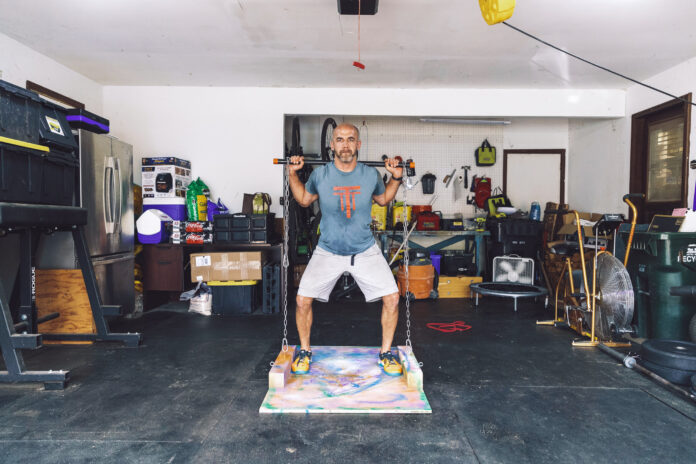The isometric tool is a simple, easy to use tool that can be used by people without any knowledge of 3D modeling. It allows the user to create their own models for printing or uploading to other programs.
Isometric equipment can be made at home, but it is not easy. There are many different types of materials that can be used to make an isometric tool. The diy isometric equipment article explains the different materials that can be used in making an isometric tool.
The directions for an isometric device that may be used for a variety of workouts are listed below. Other DIY isometric tools have been spotted by those acquainted with Never Gymless or Infinite Intensity (along with research regarding isometrics). After finishing these books, I created the tool below. As a result, I’ve added this article to the forum’s Post-Purchase FAQ section. This FAQ will be updated on a regular basis as I continue to add to it.
Before we get into this tool, it’s important to note that I don’t own any Home Depot stock. There’s nothing in it for me if anybody builds anything. I understand that this tool may seem strange to people who are unfamiliar with isometrics.
However, I’ve been doing isometric training on a regular basis for many years and have continued to see great strength improvements. Obviously, this instrument isn’t the be-all and end-all of isometric training; there are a plethora of alternative choices. It’s only one example of a potential addition. It’s also worth mentioning that isometric training isn’t meant to take the place of your regular workout. It isn’t a substitute for a well-rounded curriculum, but it is a valuable complement to one. I work with different kinds of isometrics three or four days a week, and have done so for a long time (ie. years). I change up the exercises and techniques I use on a regular basis, but I always perform some kind of isometric training (ex. static dynamic protocol, targeting sticking points, targeting multiple joint angles for a given exercise, static bodyweight exercises such as bridging, etc.).
Constructing the Tool
In terms of the details, I was lucky in that I already had the timber and chain, so I just needed to buy a few quick-links to complete the project. The following is the full component list:
- 3/4-inch plywood, 2′ x 4′
- 6 feet of 4′′ x 4′′ wood
- Three links in a chain
- Three bolts of lightning
- There are two handles.
- Deck screws that are long
- There are a number of Quick-link connections.
The construction instructions are self-explanatory. The 4′′ × 4′′ was cut into two foot lengths. One arm workouts will be performed on the middle component. Then, on either side of the central piece, I put a 4′′ x 4′′. I didn’t use any exact measurements in this recipe. I designed the gadget around the foot position I’d require. I took a stance on the plywood and marked out the proper width depending on how comfortable I felt. I did, however, make certain that there was adequate space for cement blocks (which will be explained later in this entry). I used liquid nails to attach the 4′′ × 4′′ pieces, and then long deck screws to keep them in place (after the liquid nails had cured).
Each 4′′ by 4′′ has its own eye hook in the center. A quick-link connection connects the chain to the eye hooks. I make it a point to utilize the strongest connections I can locate wherever possible. Each of the eye hooks is rated at 350 pounds. The connections and chain are rated considerably higher.
Handles
I had an extra set of playground ring handles on hand, so I utilized them for this tool’s handles. There are two quick-link connections on each handle. Climbers’ carabiners are comparable to the connection on the far right. These connections were bought from a local hardware shop. They make it possible to make rapid changes.
I was lucky enough to have playground rings on hand, but there are other handmade alternatives for grips. I’ve created handles in the past by threading chain through a tiny length of reinforced PVC tubing. To shut the handle, I attach the chain with a tiny quick-link.
Points of Visual Reference
You can see how I spray painted every fifth chain link in the photo below. When doing workouts with two chains, this is very helpful. You don’t have to count the chain links on either side to make sure they’re all the same length. A fast visual reference is provided by the painted chain.
Exercise Possibilities
Here are a few examples of exercises (certainly not a definitive list). As you can see, the middle 4′′ x 4′′ may be used for single arm workouts, or the outside connections can be used for two arm activities. You can easily change the angle of each workout by moving your quick-link up or down the chain. I always make it a point to work on a variety of joint angles.
It’s also worth noting that this item may be kept inside with ease. It was 20 degrees Fahrenheit at the gym when I took these photos, so I had to wrap up.
I can target a much lower position in the workout by standing on cement blocks.
Instead of attaching to the chain first, I can link my handles straight to the eye hooks. I stand on blocks below and connect straight to the eye hooks, putting me at the bottom of the workout.
This tool may also be used to execute many upright pulls. Here’s an example.
Here’s another, this time with the handles facing inside.
Work may also be done on a one-on-one basis. As seen below, I can imitate an upright row. The chain length may then be quickly adjusted to address various angles in the workout. At every joint angle, a strong chain allows for maximum exertion. It may seem odd, but pulling with maximum effort is not unusual.
With this equipment, overhead pressing is also excellent. For pushing workouts, I utilize the outside chains. Isometric pressing has improved my overhead pressing abilities significantly (with weights). The chain enables me to exert maximum effort at all angles of the workout. With this workout, I often ascend the chain, moving up one link at a time.
There are also two-handed variants.
As you can see, this basic gadget may be used to target a variety of traditional workouts.
Options abound this spring.
The installation of a tension coil spring to this instrument is one alteration that may be performed. You may connect a coil like this to your handle to give the device a little more “give.” Any of the motions shown above may be enhanced using a coil spring. To prevent the coil from coming undone, you may choose to crimp the ends closed. If this isn’t an option, keep an eye on your connections to make sure your handle doesn’t fly off the coil.
The coil shown below has a 350-pound capacity.
A strong tug on the handle, as you can see, only causes a tiny strain in the coil.
This tool has a dynamic sensation thanks to the coil. You have the choice of holding the stretched posture or doing repetitions by pulling and then releasing (continuing to alternate in this fashion).
Summary
When I had limited access to equipment years ago, I found isometrics to be useful. Despite having all of my current equipment, I still find isometrics to be very helpful. As a parent of small children, I found isometrics to be especially helpful. I am capable of exerting maximum effort while remaining silent. It may not seem like much, but when you have a sleeping baby, it’s wonderful to be able to train near by without disturbing them.
A relic from the past
If you’re looking for a throwback to isometric training, check out the picture below:
More Homemade Tools
Please see the picture below for additional DIY equipment ideas:
There is an alternative to the isochain, which is called the isometric tool. This tool allows users to create isometric images on their own. Reference: isochain alternative.




